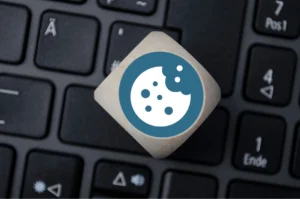Table of Contents
SurfWisely Synopsis
Why does this matter to me?
Parents — With the amount of time our students spend online today, we need to be proactive about cybersecurity and internet safety. Kids need to learn about protecting themselves, their friends, and their devices online. Implementing fun and engaging programming to teach them these skills can ensure they enjoy the lessons and take in the teachings, too.
Principals and School Administrators — With kids spending so much time on both school devices and smartphones, cybersecurity has become a part of your career. By teaching students to protect themselves, their friends, and their devices online, you can prevent troubles like identity theft, cyberbullying, viruses, and more. Gamified cybersecurity programming can make the process fun for everyone involved, too.
Tech Teachers — Cybersecurity is at the heart of your career, but it’s not always something students want to hear. By implementing a gamified program to teach these skills, you take one topic off your already-full plate and protect students’ online safety at the same time. Hop down to the last paragraph of this post to learn more.
More Cybersecurity Best Practices for Kids
Our kids are growing up in a whole new world. Because of the presence the internet plays in our society, students need to learn to protect themselves online at an early age. If they’re old enough to be browsing online, they’re ready to learn the basics of cyber security.
Cyber security for kids can be broken down into the three categories shown below:
Protecting Yourself
The internet can be a dangerous place — yes, even for yourself. This is a lesson that kids need to learn in order to be as safe as possible while using technology. Some top tools to teach your students about protecting themselves online include:
- Keeping private information, such as birth dates, addresses, full names, phone numbers, credit cards, and bank information private to prevent identity theft.
- When entering sensitive information, ensuring that the site is safe, the device is private, and encrypted text is utilized at all times.
- Password management skills and the real-life effects that can come from hacking and similar cyber threats and cyber-attacks.
Protecting Your Friends
These days, students can protect others online as much as they can protect themselves. The most effective way they can support those around them through internet safety is to stop cyberbullying in its tracks.
Kids can help prevent and stop cyberbullying attempts by:
- Acting as a positive role model while utilizing social media, always promoting kindness and respect for others with posts, tags, shares, etc.
- Telling an adult right away when cyberbullying occurs.
- Standing up for friends who fall victim to cyberbullying on social networking when it is safe to do so.
Protecting Your Devices
Protecting the technology used to access the internet is another huge topic for students to master. It’s essential is saving the high-priced tools they use for homework —and real work in the future— and it helps protect the devices that belong to their school districts, too.
- Learn to spot malware and other phishing scams, as well as the negative effects that can occur when they’re clicked on — hacked accounts, stolen data or private information, internally damaged hardware and devices, etc.
- Use privacy settings, strong passwords, and multi-factor authentication to ensure only authorized users can access devices in your care.
- Use wifi passwords and protection to secure private connections at all times.
As you can see, cyber safety isn’t always common sense. These lessons need to be taught to students to protect them against hackers, cybercriminals, cyberbullies, and more. Incorporate the tips above into your class curriculum or at-home lesson plans, and reach out to the team at SurfWisely if you need any support. Our easy-to-implement, gamified software is a fun and effective way to teach cyber security for kids.






